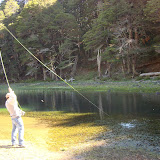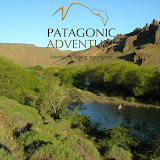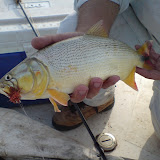
ARGENTINA
GETTING TO ARGENTINA
All airlines flying to Argentina arrive mainly at Ezeiza (“Ministro Pistarini”) International Airport, which is 37 Km away from the City of Buenos Aires. You can reach the city by Teniente General Ricchieri freeway (Information: Tel. 5480-6111). Please note that when leaving the country, a US$ 18 tax must be paid. Company Manuel Tienda León (Av. Madero and San Martín, Tel. 4315-5115) offers a bus service from 5.00 a.m. to 8.30 p.m. This service costs between $ 25 and $ 27 (Argentine pesos), and the trip takes approximately 40 minutes. There are also taxis and chauffeur-driven rented cars (from $ 53 to $ 72).
WHEN TO TRAVEL
Remember that in the southern hemisphere seasons are the opposite to those in the northern hemisphere. In general, the summer is the best time to visit Patagonia and the Southern Andes because of the mild temperatures and long days. Wintertime is recommended for travelling to the North and Northwest as rains are less frequent and tropical temperatures drop a few degrees. Autumn and spring are marvelous in Buenos Aires, Cuyo and the pre-mountain range areas of La Rioja and Catamarca.
The fishing season in Patagonia goes from November to May.
GETTING AROUND
By PlaneDue to the country’s large size, planes are best to travel long distances, and you can then take overland transportation to get to your final destination. Buying Airpass Visit Argentina in your own country, you’ll obtain more economical prices for flights within Argentina. Aerolíneas Argentinas / Austral, LADE and LAN Argentina operate domestic flights. Domestic flights and flights to Uruguay depart from Jorge Newbery Airport, located to the north of the city beside the Río de la Plata. Airport taxes range from $ 7.05 to U$S 8.
 PATAGONIA
PATAGONIA
The Andes mountain range shows its beauty in the Patagonian provinces. Millennial silent forests with native vegetable species are extended along the shores of glistening waters. On top of the mountains, nature overflows with granite peaks and ice fields spreading their glacier tongues into lakes of unsurpassable beauty.
Imposing mammals and sea birds, half-way between real life and fantasy, spend certain seasons on the rough coasts of Patagonia where they complete part of their life cycle. Seals colonies play on the islets and sandbanks. The world’s most important southern elephant seal continental colony is located in Peninsula Valdés. Every year, southern right whales come to Nuevo and San José gulfs to breed. Patagonian hares, “ñandúes” (South American ostrich) and “guanacos” run about the steppes, and the largest colony of Magellanic penguins in the world is located in Punta Tombo. This life cycle repeated since time immemorial, unfolds itself in front of the astonished visitors’ eyes.
In the south, Tierra del Fuego and the World’s southernmost city, Ushuaia, are the gateway towards the vast and mysterious Antarctica.
 The dorado (salminus maxillosus) is a fish native from Argentina, Bolivia, and Paraguay.The dorado is the most beautiful fish that dwells in the waters of the Paraná River and some other rivers of the north side of Argentina such as the Juramento River and the Dulce River.Baptized as the "tiger of the rivers", its mood and hunting voracity at the time of getting food are the perfect base for its well-deserved nickname. There is not a more fighting species in sport fishing. Owner of impressive teeth, once hooked, the dorado starts to make big acrobatic jumps that increase the level of excitement in this kind of fishing. The fight against this large fish usually lasts long minutes of tension and adrenaline. The fishing of the dorado is considered as one of the best worldwide.Dorado are exceptionally strong swimmers. They typically range in size from 5 to 10 pounds. In some fisheries, twenty pounders are common. Although the current IGFA all-tackle record is 51 pounds, giants of up to 70 pounds have been recorded. Their intense, almost radiant, golden color is marked with holographic black horizontal stripes.
The dorado (salminus maxillosus) is a fish native from Argentina, Bolivia, and Paraguay.The dorado is the most beautiful fish that dwells in the waters of the Paraná River and some other rivers of the north side of Argentina such as the Juramento River and the Dulce River.Baptized as the "tiger of the rivers", its mood and hunting voracity at the time of getting food are the perfect base for its well-deserved nickname. There is not a more fighting species in sport fishing. Owner of impressive teeth, once hooked, the dorado starts to make big acrobatic jumps that increase the level of excitement in this kind of fishing. The fight against this large fish usually lasts long minutes of tension and adrenaline. The fishing of the dorado is considered as one of the best worldwide.Dorado are exceptionally strong swimmers. They typically range in size from 5 to 10 pounds. In some fisheries, twenty pounders are common. Although the current IGFA all-tackle record is 51 pounds, giants of up to 70 pounds have been recorded. Their intense, almost radiant, golden color is marked with holographic black horizontal stripes.
 Conventional gear for big dorado is virtually the same as that used for trophy peacock bass (although a wire leader is essential).Fly fishermen are best equipped with an 8-9-weight fly rod and either a 200 to 300 grain, 24-foot sink tip line or a full floating line depending upon water conditions. A heavy steel leader is a must, as these fish will chew through any kind of monofilament as though it were sewing thread! Dorado take a variety of streamers, sliders and even Atlantic salmon-style Bombers during ideal conditions (tied on 3/0 to 6/0, heavy, long shank hooks).
Conventional gear for big dorado is virtually the same as that used for trophy peacock bass (although a wire leader is essential).Fly fishermen are best equipped with an 8-9-weight fly rod and either a 200 to 300 grain, 24-foot sink tip line or a full floating line depending upon water conditions. A heavy steel leader is a must, as these fish will chew through any kind of monofilament as though it were sewing thread! Dorado take a variety of streamers, sliders and even Atlantic salmon-style Bombers during ideal conditions (tied on 3/0 to 6/0, heavy, long shank hooks).
















